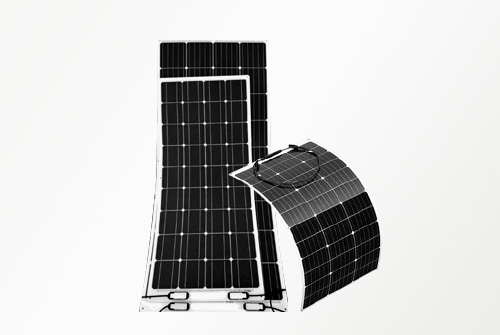Product Introduction:
Our flexible solar panel offer a wide range of power output options to suit your specific needs. Whether you’re powering a small device or an entire home, we have the perfect solar panel solution.
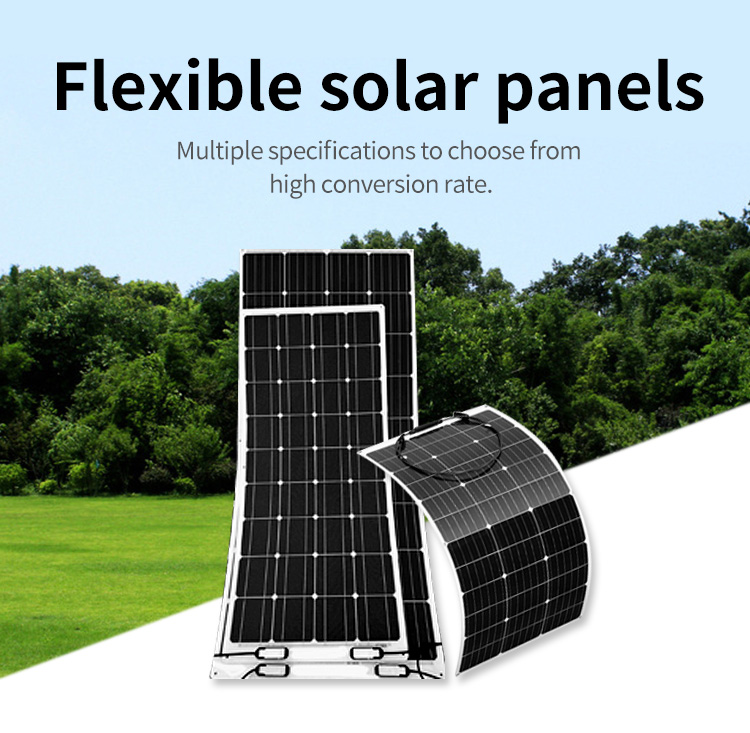
Solar Panels Key Features:
Customizable power: Choose the wattage that best matches your energy requirements.
Diverse applications: Power a variety of devices and systems, from small electronics to large residential installations.
High efficiency: Our panels are designed to maximize energy conversion, providing you with the most output for your investment.
Durability: Built to withstand harsh weather conditions and provide long-lasting performance.
Easy installation: Our panels are designed for simple installation, making it convenient to harness solar energy.


Solar Panels Applications:
Residential: Power homes, cabins, and RVs.
Commercial: Generate electricity for businesses, farms, and industrial facilities.
Off-grid systems: Provide power in remote locations without grid access.
Marine applications: Power boats and other marine vessels.
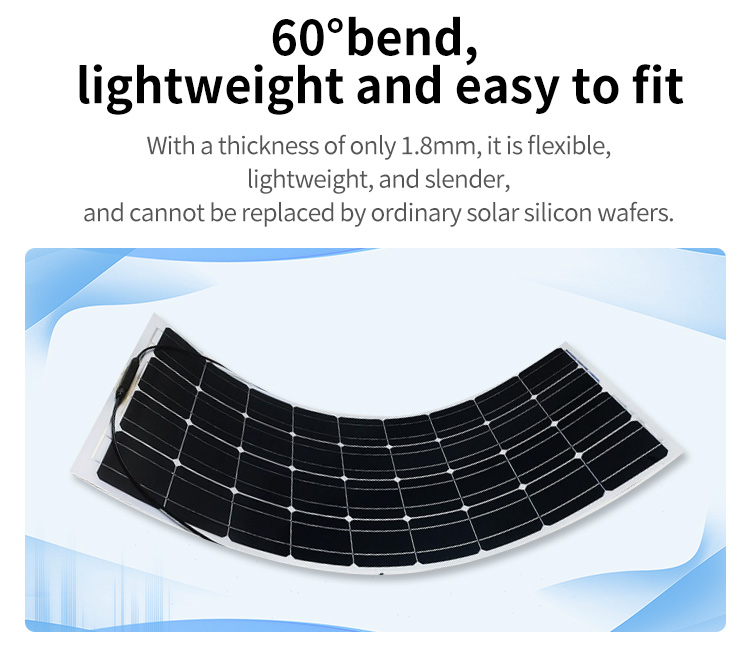
How to Choose the Right Flexible Solar Panel
There are several factors to consider when deciding which flexible solar panel is best for your needs. These include rated power wattage, durability, flexibility, efficiency, and size.
Let’s break each down in more detail to discuss what you should look for when choosing the right flexible solar panel for you.
- Wattage: The higher the rated power of a solar panel, the more electricity you can potentially generate. Keep in mind that solar panels rarely produce 100% of their rated power in real-world conditions. 75% of rated power (so 300W from a 400W panel) during daylight hours is a safer assumption when planning your solar array.
- Durability: Most flexible solar panels are designed to withstand rain, snow, high winds, and debris from dirt and sand for 15 to 20 years. However, you still should choose a product that comes with a warranty.
- Flexibility: Flexibility can vary from manufacturer to manufacturer. Make sure you measure the surface you’ll mount the panel carefully to estimate how much flex you need for the panel to form correctly to the surface.
- Efficiency: Different types of bendable solar encasements come with different efficiency ratings. With PV panels, efficiency is a specification that measures how much of the sunlight a panel is exposed to and can be turned into electricity. Most of EcoFlow’s solar panels (including the flexible ones) boast an industry-leading efficiency rating of 23%. Check the efficiency rating of any panel you are considering. It will substantially impact your return on investment (ROI).
- Size: Measure the area you are looking to install your bendable panels carefully before making your purchase. You need to make sure you order the correct size for your array.

Benefits of Solar Power:
Reduce energy costs: Lower your electricity bills by generating your own clean energy.
Environmental friendly: Reduce your carbon footprint and contribute to a sustainable future.
Energy independence: Gain control over your energy supply and reduce reliance on traditional power grids.
Contact us today to learn more about our solar panel solutions and find the perfect fit for your needs.
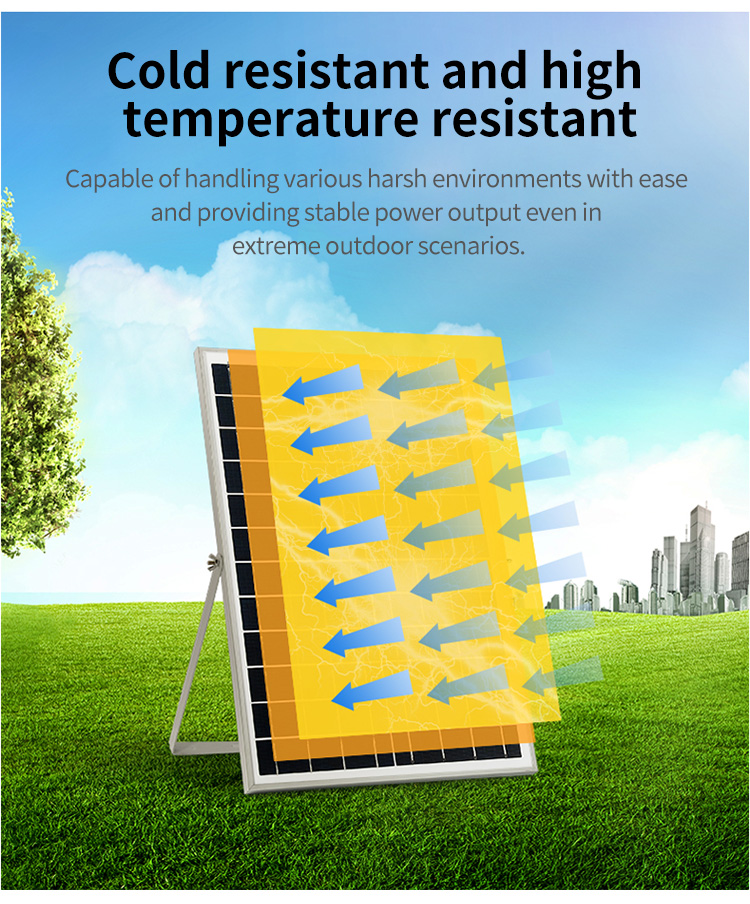
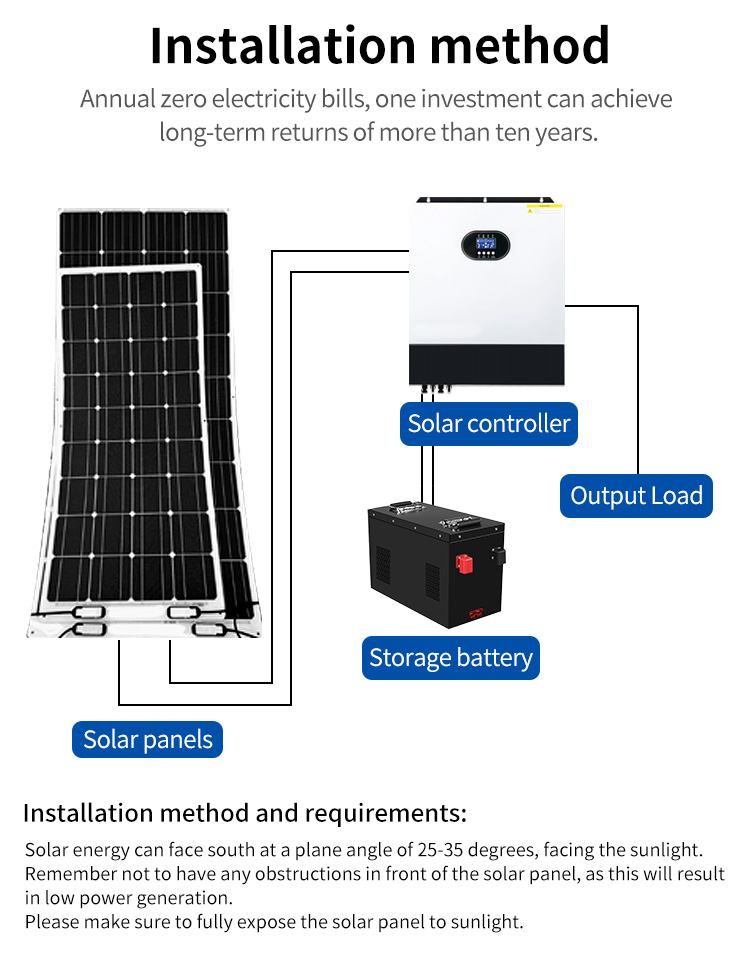
Flexible Solar Panel Installation
Installing flexible solar panels is simple, and many people can do it on their own. However, if you want to ensure the installation is done correctly and securely, hiring a professional to help you with your solar installation never hurts.
This is especially true if you plan to use flexible photovoltaics in concert with additional rigid and portable solar panels. Combining multiple encasement types to maximize your available space is the best way to ensure you generate enough electricity to meet your off-grid power needs.
Here are some crucial tips for installing flexible solar panels on an RV.
1. Plan ahead
Before installing anything, you should know what kind of mount you will use, what tools and materials you need, and where exactly your bendable panels will be installed. Measure your panels and use a marking pen or colored tape to create a mockup of your installation before you drill.
Another step to planning ahead is deciding whether you will install spacers or lay down material to create an air gap. An air gap is important to help keep your panels cooler to ensure they last longer and perform to their full potential. High temperatures can decrease the efficiency of the panels.
2. Mount the panels
With bendable panels, you have two main ways of mounting. If you decide to create an air gap with spacers, a layer of cardboard, or a polycarbonate sheet, you need to mount that first.
You can mount your air gap by either screwing down the spacers or brackets to the surface or by using double-sided 3M VHB tape or industrial adhesives.
Suppose you are not creating an air gap. In that case, you can simply screw the bendable panels to the surface using the mounting holes on the corners of the panel or use double-sided 3M VHB tape or industrial adhesives along the edges.
If you are using tape or industrial adhesives, leave some space to allow air to flow beneath the panel to prevent it from trapping air, which can cause damage to the panel and surface.
3. Connect the panels to the rest of the solar installation
If you have installed other panels, simply connect your new panels to the existing ones using the “in-series” or “in-parallel” method. If you don’t have other panels installed, then you can connect directly to the portable power station, power kit, or BOS that your setup uses.
Final Thoughts
There are many situations where flexible solar panels can be highly beneficial. Flexible panels help maximize available surface area to generate as much electricity as possible. They are affordable, easy to install, and can last a long time with little maintenance.
